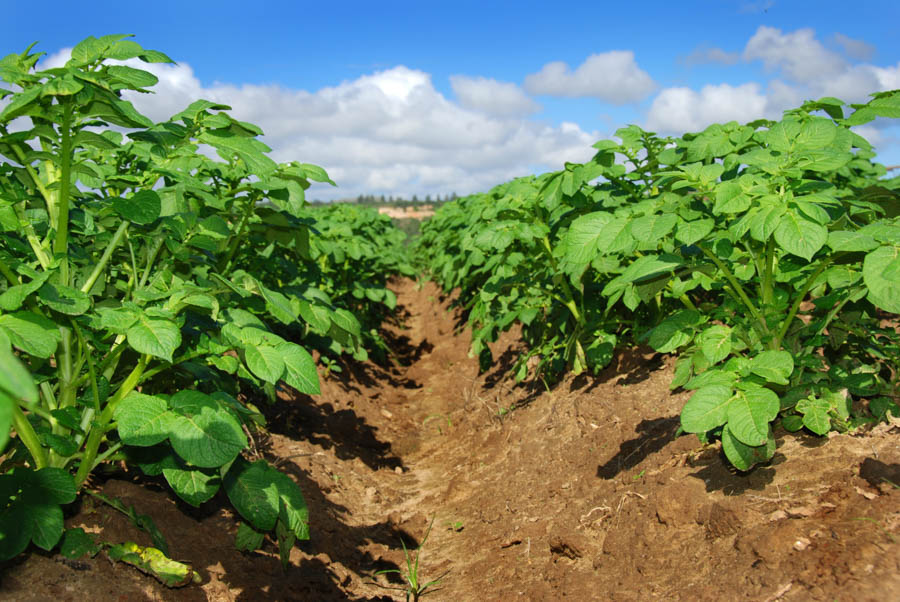Potatoes: Harvesting, Curing and Storing

Potato plants are often abundant producers; to best preserve the harvest, potatoes should be carefully harvested and correctly cured and stored.
New Potatoes. Potatoes begin to produce tubers after flowering. Several weeks after flowering, dig carefully into the loose soil at the sides to find the thin-skinned new potatoes. These new potatoes should be eaten soon after harvesting. To harvest, move soil carefully aside and remove a few potatoes from the various potato plants. The remaining plants will continue to produce a full crop of mature potatoes.
Mature Potatoes. Harvest mature potatoes after all the vines have died. Once plants begin to die back, eliminate watering; this helps to cure the skins and increase storage potential. To make the spread of disease less likely, harvest during dry weather and remove the vines before harvesting tubers. Dig up a few potatoes to ensure that they have reached their maximum size. Begin at the outer edges of each plant and work your way in with your hands. Tubers develop 4 to 6 inches beneath the soil surface. Handle as gently as possible. Many gardeners like using a spade to lift the tubers out of the soil, but take care not to damage the tubers. Mature potatoes have skin that does not rub off easily. If the potato skins do rub off easily, wait a few more days before harvesting. Separate healthy potatoes from damaged potatoes; potatoes with minor deformities such as small nicks in the skin should be eaten immediately and more seriously damaged or diseased potatoes should be discarded.
Potato plants may also bloom and form small, hard green fruits. Don’t be tempted to harvest the small fruits — they’re toxic.
Curing. Mature potatoes should be cured before eating. Curing causes the skins of potatoes to thicken and slows the respiratory rate of the tubers, preparing them for storage. To cure potatoes, brush off any remaining dirt and store dry potatoes between 45 to 60 degrees F and a relative humidity of 85 to 95 for 10 to 14 days. After curing, sort the potatoes and discard those that are soft or discolored.
Storing. Store potatoes in a cool, dark place between 40 and 45 deg F and a relative humidity of 90 percent. Do not store potatoes in the refrigerator: when stored at temperatures below 40° F, and refrigerator temperatures are generally below 40 deg F, starch converts to sugar, and the moisture causes sprouting. Potatoes stored above 45 F may sprout after several months. Avoid airtight plastic bags. Avoid paper bags without openings for air circulation. Potatoes are moderately sensitive to ethylene gas, so take care to place your potatoes away from ethylene-producing fruits.
GardenZeus has customized growing information by plant and zip code. To get started, enter your zip code here.
Related articles of interest:
